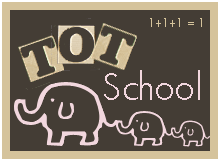Science study follows the same time periods as history - we learn the same science people in those time periods knew and discovered.
Grade 1: Biology - the physical world, animals and people
First graders, who are studying the ancients, learn about those things the ancients could see - animal life, the human body, and plants. They make collections, take nature walks, and sprout beans in jars.
Label notebook "Life Science" and divide into 3 sections:
Animals
Choose 20 topics from The Kingfisher First Animal Encyclopedia and spend a week on each. For scientific classification, see this post. For activities suggested in book fill out an experiment page with complete sentences answering the following questions:
What did we use?
What did we do?
What happened?
What did we learn?
Make narration pages (once every two weeks) from outside sources (library books). Hunt for animals outside, put specimens in a bughouse and draw a picture. Write answers to these questions:
Does it have a backbone?
Does it have fur?
Does it have wings?
What does its skin feel like?
How many feet does it have? What do its feet look like?
How many legs does it have? What do the legs look like?
What does its body look like?
What does it eat?
How big is it?
What do its babies look like?
Is it domesticated or wild?
Is it endangered?
The Human Body
Choose ten topics (one a week) from the Kingfisher First Human Body Encyclopedia. Read each topic, make a narration page, do any experiments and make experiment pages, do additional library reading.
Plants
Spend 6 weeks with Green Thumbs: A Kid's Activity Guide to Indoor and Outdoor Gardening
This simple project book explains the basic facts about seeds, plants, and trees and offers indoor and outdoor gardening projects. Pick an activity a week, do it, and make an experiment page.
Grade 2: Earth Science and Astronomy - the earth and the sky
Second graders collect facts about the earth and sky just as Copernicus and Tycho Brahe observed the heavens.
For each unit, choose 18 topics from the text (listed first below), read and narrate (use prompting questions: Tell me 2 or 3 things you learned. What was the most interesting thing we read?). Do additional reading from library and do an activity from one of the activity books suggested and make an experiment page.
Earth Science:
The Usborne First Encyclopedia of Our World
More Mudpies to Magnets
Astronomy:
The Usborne First Encyclopedia of Space.
The Spotter's Guide: The Night Sky
Glow-in-the-Dark Constellations: A Field Guide for Young Stargazers
The Stargazer's Guide to the Galaxy
Grade 3: Chemistry - the way the elements work together
Third graders study atoms and molecules, what elements are, and how they interact. They study the great chemists - Robert Boyle, Georg Ernst Stahl, Antoine Lavoisier, John Dalton.
Divide your notebook into two sections-
Experiments:
The book Adventures with Atoms and Molecules (also book 2) contains 60 experiments so choose two per week and fill out an experiment page (see grade 1).
Definitions:
All chemical terms in the books are underlined. After doing the experiment, look up these underlined terms in a basic or advanced science encyclopedia and make a definition page that contains the term, it's definition and a drawing or diagram that makes the term clear.
Grade 4: Physics - the laws that govern the universe
Fourth graders, studying modern times, learn basic physics and are introduced to the elements of computer science. Physics is simply the study of the physical world and how it works - how sound travels, magnetism, the laws of electricity, energy and motion.
Do two experiments a week from Physics Experiments for Children (9 from each chapter) and fill out an experiment page. Then read more from a science encyclopedia (see Chemistry) and write a 3-4 sentence narration, explaining one or two of the concepts covered.
The book suggested above was chosen because the experiments are simple, use mostly household items and cover all 7 major physics topics (water matter, air matter, mechanical energy and machines, heat, sound, light and magnetism and electricity. If you want more advanced books try these:
Starting with Science: Solids, Liquids and Gases by Louise Osborne
Starting with Science: Simple Machines
Electricity and Magnetism
Sound and Light
Energy and Power
Subscribe to:
Post Comments (Atom)


No comments:
Post a Comment